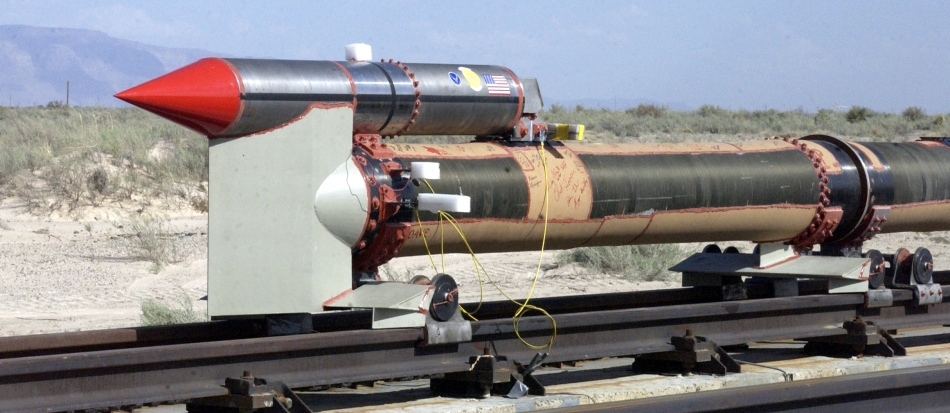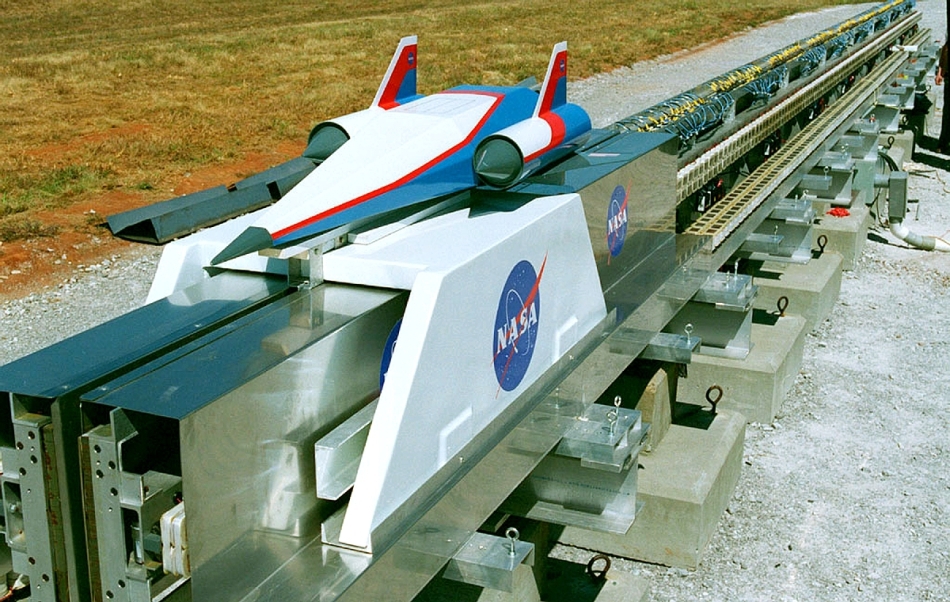Fantasy about specialized steps

Modern boosters born for space. Earth's atmosphere only hinders them. It requires putting heavy fairings on the payload, adding fuel to overcome air resistance and parry wind gusts. But the earth's atmosphere does not have to be a hindrance. Wings can lean on the air, creating lift, and oxygen for engines can be obtained along with the air, and not carry it with you in heavy tanks. What if to dream up and create a concept for launching payloads into orbit using specialized stages?
Source of the problem
Going into orbit is mainly speed. Experiments on the launch of a vertically upward geophysical rockets in the 40s and 50s did not attract much attention. The rocket could climb hundreds of kilometers, but after a few tens of minutes it still fell back to Earth. The informational furore of the first satellite was that for the first time in the history of mankind, it was possible to disperse a man-made object up to eight kilometers per second. If we are talking about speed, then the engines should have some characteristic that shows how well this engine accelerates our unit. This characteristic is called specific impulse.
The specific impulse is the number of seconds for which one kilogram of fuel is enough to create an engine thrust of 1 Newton. The specific impulse is measured in seconds or meters per second.
Let's look at the diagram of specific impulse values for different types of engines and different flight speeds:

')
At subsonic speeds, it is better to direct the energy of the fuel to the work of turbines or propellers than to burn to create thrust. Therefore, now civil aircraft are turbojet engines with a high degree of bypass ratio and fan motors. The maximum value of the specific impulse makes such engines economical, but on them it is fundamentally impossible to accelerate to high speeds.
Turbojet engines operate in a wider range. They can start from the airfield and accelerate to 2-3 M. But you have to pay for this by reducing the specific impulse, so these engines are now put mainly on military vehicles, which are not so important fuel economy.
Ramjet is a ramjet engine. The ramjet engine is very simple and allows you to fly at supersonic speeds. One problem - it needs a booster stage or carrier, because it does not work at subsonic speeds. Ramjet because of its simplicity is widely used in combat missiles.
The scramjet is a hypersonic ramjet. A scramjet differs from a ramjet in that the air enters the combustion chamber at supersonic speeds. It is simply arranged in the picture, but behind this simplicity are very complex calculations. Scramjet are being tested in different countries for the last twenty years, but they have not yet been used to make serial devices.
And finally, the rocket engines in this diagram show their independence from the atmosphere and speed.
The temptation of universality
Is it possible to make a universal device that could fly in the range of 0-10 M? The closest to this range was the SR-71 Blackbird , and it very clearly shows the complexity of the task. For the “only” 0-3.2 M range, it was necessary to make a hybrid of turbojet and direct-flow engines and create new fuel. See the scheme of the engine or video:
Our imperfect world is designed so that the universal device will be more expensive, more difficult, less reliable or functionally worse than specialized, if the functions combined in the device are not related. It’s easy to add an alarm clock to your mobile phone — there’s already a clock, a screen, a keyboard, a battery and a speaker. But to create a hybrid of an airplane and a car, or an engine capable of working in a parking lot, supersonic and hypersonic is much more difficult.
Formulation of the problem
What indicators do we want to achieve, and what will limit us?
- The payload is assumed to be around 10 tons. Why such a figure? This is enough to put a heavy satellite into near-earth orbit or send a standard satellite to a geo-transfer orbit. Too small a payload will greatly facilitate our task, but in this case there will be a question of the meaningfulness of the entire system. Too much payload will require cyclopean and cosmically expensive structures.
- Technical solutions are selected with the highest level of technical readiness, ideally, having a history of mass production. Firstly, it guarantees the fundamental feasibility of the solution. Secondly, mastered technologies should be cheaper.
- When choosing technical solutions, we will also avoid gigantism. Constructions of a planetary scale, aircraft carriers with dozens of engines - all this may look beautiful, but unrealizable in the coming decades.
When creating our concept, we will move “from top to bottom”, this should facilitate the decision-making process.
Upper stage
The upper stage will be responsible for acceleration to the first cosmic speed. Obviously, this should be a rocket stage. We choose liquid oxygen and liquid hydrogen as a fuel pair. They have been developed for a long time and quite well. Why exactly they? For the upper stage, the specific impulse is extremely important, and of our usual fuel pairs, only oxygen-hydrogen can give us a specific impulse of about 450 s.
Looking ahead, we say that the initial speed of the upper step will be around 5 M at an altitude of ~ 30 km, i.e. 1500 m / s. An approximate calculation gives the initial mass in the region of 60-80 tons, depending on the mass of the empty upper stage.
Second stage
The second stage performs the function of accelerating the payload in the atmosphere. For this, small wings will be useful to her - they will create lift. But what engine to put on this machine? The rocket engine version is rejected - it does not use oxygen from the atmosphere and therefore has a very low specific impulse. A TRD loses its effectiveness after 2 m. One option remains - a ramjet. In addition to being able to work at speeds in the region of 5 M, its simplicity means a relatively small mass, which will have an extremely positive effect on the characteristics of our apparatus.
The mass of the device at the concept level can only be determined very roughly, because there are no direct samples for comparison. Offhand, if compared with the mass perfection of cargo aircraft, the initial mass of the two stages and the payload will fall in the range of 250-350 tons. The device will obviously be reusable.
First stage
The second-stage engine cannot operate at subsonic speeds. Therefore, we need to add one more step, which will accelerate our unit from zero to 1.2-1.5 M. How can we do this? The idea of an aircraft carrier is dismissed immediately - cargo aircraft are subsonic, and no serial cargo aircraft can lift 300 tons. Theoretically, you can put solid fuel boosters smaller than those that were on the Space Shuttle. But it is possible to revive the system, which was supposed to be used by the first theorists of the rocket movement and science fiction - starting from the ramp. Having built almost ordinary rails, you can simply and cheaply accelerate the second stage on the rocket sleigh . We can assume the following advantages:
- Mounting accelerators to the sled should reduce the strength requirements for the second stage.
- After launch, the boosters along with the sleigh are inhibited and can be reused without problems (which is more difficult to provide for boosters discharged into the air).
- A small and tolerable 4 g acceleration from people will require only 3 km to reach a speed of 1.2 M and 3.2 km for 1.5 M.
- Horizontal acceleration does not require overcoming the gravity of the earth, starting accelerators become smaller.
- No need to build expensive and cyclopean constructions.
The most famous landfill using rocket sleds is the Holloman base , where the length of the rails has already passed 15 km, and the maximum speed reached is 8.5 M:

Four-stage rocket sleds, reaching a speed of 8.5 M in 2003
Analogs
Mankind is distinguished by cunning and ingenuity, so it is worthwhile to look for similar schemes already invented. In 2010, NASA conducted research on the same idea on more advanced technologies. Instead of rocket sleds, it was proposed to use an electromagnetic or gas catapult, and instead of a ramjet to put a scramjet, which could disperse the second stage to twice the speed - 10 M. The system model was even built:

The development team proposed a ten-year project implementation plan. Sorry, news later than 2010 could not be found. It is unlikely that the project is being actively developed.
Also, the concepts will be related:
StarTram , involving the acceleration of the payload on maglev to speeds in the region of the first space.
Maglifter , an idea from 1994, also suggests using a maglev to replace the usual first stage of a launch vehicle.
Conclusion
The proposed scheme can have the following advantages:
- High level of technical readiness of components, technology mastered and inexpensive.
- Ease of providing reusability of the first and second stages.
- The specific impulse of the second stage is higher than that of the rocket stages.
- The implementation of new technologies can increase the overall efficiency of the system. For example, if we succeed in creating a hybrid ramjet / scramjet, then the rate of separation of the third stage and the zone of increased specific impulse can be seriously increased.
- The launch facility is universal - standard and lightweight stages can be launched on the same rails.
There are a lot of ideas for facilitating access to space, who knows, maybe in the future the spacecraft will start from the ramps, as they thought out a century ago?

The film “Space flight”, 1935. If you haven't watched it, I recommend, after all, K.E. Tsiolkovsky - Scientific Consultant
On the tag “Facilitating access to space”, other publications on this subject are the sad history of the economic failure of the Space Shuttle, the idea of an air launch, “one step into orbit”, “a big stupid carrier”.
Source: https://habr.com/ru/post/366913/
All Articles